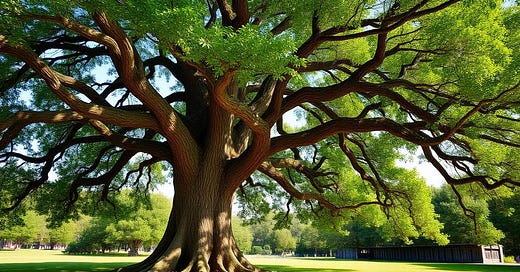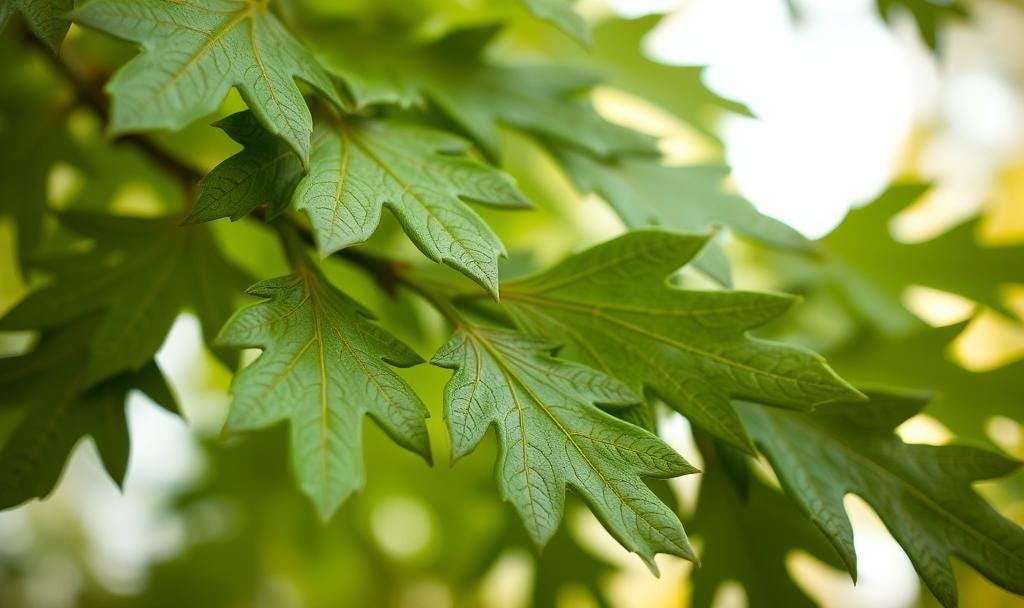The spiritual life does not remove us from the world but leads us deeper into it.”
– Henri J.M. Nouwen
Anyone that knows me well recognizes that I am drawn to trees. As a child I climbed them, I like to draw and paint them, and I have hiked through them more times than I can count. I have also surrounded myself with them in places I have lived.
So it comes as no surprise that I was attracted to the tree as a metaphor for spiritual practice. Someone once shared a graphic with me that illustrates this metaphor. I find it useful in thinking about spiritual practice and in explaining it to others.
Imagine your favorite tree for a minute. Imagine its largest branches. In this metaphor, those large branches represent the types of spiritual practices available to us. There are at least seven: creative, activist, relational, movement, generative, ritual (or cyclical), and stillness.
Now visualize one of those large branches and the smaller ones that extend from it. The smaller branches in this metaphor represent the subcategories of practices within a larger category.
Stillness practices, for example, include various forms of meditation and prayer, or simply quieting the mind in silence. The activist category includes things like pilgrimages, certain types of work and volunteering, vigils and marches, and the act of bearing witness.
The web site, Spirituality and Practice, offers another framework for exploration. It highlights thirty-seven key categories of practices recognized in the world's religious and spiritual traditions. The founders of the site, Frederic and Mary Ann Brussat, call it the Alphabet of Spiritual Literacy.
Two other resources for expanding our thinking about what constitutes spiritual practice are: Everyday Spiritual Practice: Simple Pathways for Enriching Your Life (Scott W. Alexander) and Faithful Practices: Everyday Ways to Feed Your Spirit (Erik Walker Wikstrom, Editor). There’s something available for all of us it seems – practices that complement our distinct personalities, affinities, and temperaments.
But consider for a moment — why engage in spiritual practice in the first place? Clearly, there are many other ways to spend one’s time.
I bring you back to the visualization of your tree. Picture the roots. It is here that we understand the purpose for practice – the why. In my view, there is essentially one common purpose: To become aware of and connect to something larger than our selves; to access the wisdom, equanimity, and direction that connection offers.
What this “something” is will be perceived differently from person to person. Some perceive it as God, Source, the Divine, All That Is, a Higher Power, or a Universal Intelligence. Others perceive it as one’s higher self, humanity, all sentient beings, the natural world, or Consciousness. I’m sure I could add more to the list. Think about what that “something” is — or could be — for you.
How do we gain awareness of this larger something? We simply start to pay attention. Our practices help us do that in deliberate ways.
“But what about the ‘connection’ part?” you ask. “What the heck is that?” Well, that is something experiential. If you haven’t already, I invite you to give spiritual practice a try and discover for yourself. Based on my own experience, I’m convinced a connection is possible.
There are three suggestions I can offer to help you begin (or revisit) a spiritual practice. First, bring an open mind to the possibility of connecting to “something larger”. Again, affirm or consider what that is for you.
Second, bring a commitment to regular practice, daily if possible. Starting small is always a good idea. A few minutes a day is better than none. I found it helpful, initially, to set a specific period of time for trying a new practice. When I first started meditation, for example, I aimed to practice, daily, for forty days. That jump-started the practice I have today, many years later.
The third suggestion I can offer is to practice from the heart. Get out of your head. To illustrate, I once questioned whether a practice I was doing was “working” to achieve what I had hoped. My wise teacher counseled that if I was using practice as an intellectual strategy to achieve a specific result, I was missing the point. Practice is heartfelt, divorced from pre-conceived outcomes.
Final Thoughts
There is one addition I would make to the tree metaphor I referenced above. It is based on my personal experience with spiritual practice and from the experiences others have shared with me.
Again, visualize your tree. Picture the leaves it produces. These are the natural byproducts of healthy growth, beginning at the roots and moving upward and outward. As long as the tree is connected to its roots, the leaves emerge naturally – over time.
Though not promised, a similar growth is possible with spiritual practice.
The leaves on your tree could signify the emergence of new, more expansive qualities of heart. A dedicated practice, conducted over time, often leads to shifts, to fresh growth:
From anger to inner peace.
From resentment to forgiveness.
From pessimism to empowerment.
From greed to generosity.
From conflict to serenity.
From scarcity to abundance.
From apathy to compassion.
From fear to love.
May it be so for all of you.
Note: Maia Duerr, a fellow writer here on Substack, was a co-creator of “The Tree of Contemplative Practices”, the wonderful graphic I referenced above. I use it often with spiritual direction clients as a visual way to understand contemplative spiritual practice. View a current version of the graphic here on Maia’s web site.




